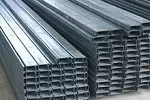Perforated Sheet Metal vs. Expanded Sheet Metal: What’s the Difference?
Perforated sheet metal and expanded sheet metal are two popular types of sheet metal used in various industries. Both are manufactured using a similar process but with different outcomes. Perforated sheet metal is stamped or punched to create holes, slots, or decorative shapes, while expanded sheet metal is stretched to create a mesh-like structure. Understanding the differences between perforated sheet metal and expanded sheet metal can help you make the best choice for your project.

What is Perforated Sheet Metal?
Perforated sheet metal is a type of sheet metal that has been stamped or punched to create a pattern of holes, slots, or decorative shapes. These patterns are created by using specialized tools that can punch precise shapes into the metal sheet. Perforated metal sheets can be made from a variety of materials, including aluminium, stainless steel, and mild steel.
Perforated sheet metal is widely used in different industries and applications such as filtration, architecture, interior design, sound insulation, and ventilation systems. For example, in Singapore, perforated metal sheets are often used as decorative features for building facades, railings, and outdoor furniture. They can also be used as pipe fittings for drainage systems, as well as in air conditioning and ventilation systems.
What is Expanded Sheet Metal?
Expanded sheet metal, on the other hand, is a type of sheet metal that has been cut and stretched to create diamond-shaped patterns. This process involves slitting and stretching the sheet metal, resulting in a more rigid and sturdy structure compared to perforated sheet metal. Expanded sheet metal can also be made from different materials such as aluminium, stainless steel, and mild steel.
Expanded sheet metal is commonly used in construction, such as in roofing and flooring. It can also be used for ventilation systems and pipe fittings. In Singapore, expanded sheet metal is widely used for decorative purposes in commercial and residential buildings.
One advantage of using expanded sheet metal is its increased durability.
The Difference Between Perforated and Expanded Sheet Metal
When it comes to sheet metal, two popular options are perforated and expanded sheet metal. Perforated sheet metal is a sheet that has been stamped or punched to create patterned holes, slots, or decorative shapes. On the other hand, expanded sheet metal is a sheet that has been slit and stretched to create diamond-shaped openings.
One key difference between the two is the pattern of the openings. Perforated sheet metal typically has a more precise and uniform pattern, while expanded sheet metal has a more random pattern.
Another difference is in their applications. Perforated sheet metal is commonly used in architecture, furniture, and machinery industries for filtration, ventilation, and sound absorption purposes. Meanwhile, expanded sheet metal is used for fencing, flooring, and pipe fitting Singapore due to its structural strength and anti-slip properties.
Applications
Perforated sheet metal and expanded sheet metal both have a wide range of applications across various industries. One of the primary uses of perforated metal is as a screening material for air ventilation systems. It is commonly used in commercial buildings, industrial plants, and hospitals for this purpose.
Expanded sheet metal, on the other hand, is commonly used for fencing and security purposes. The unique design of expanded metal provides a strong and sturdy barrier that is difficult to climb or penetrate. This makes it ideal for use in prisons, military bases, and other high-security facilities.
Another popular application for perforated metal is in the automotive industry. Perforated metal sheets are used to create grilles for air intake systems, which provide both functionality and an aesthetic appeal to the car's design.
Advantages
Perforated metal sheets and expanded metal sheets both have their own set of advantages that make them popular choices for various applications. Let's take a closer look at the advantages of each type:
Perforated metal sheets offer:
- Versatility: With numerous hole patterns and designs to choose from, perforated metal sheets can be used for a wide range of applications, from architectural to industrial.
- Customization: The size and shape of the holes can be customized to meet specific design or functional requirements.
- Durability: Made from materials such as stainless steel, perforated metal sheets are durable, corrosion-resistant, and have a long lifespan.
Disadvantages
Despite its versatility, perforated sheet metal also has its downsides, especially when compared to other metal sheet options like expanded sheet metal. Here are some of the disadvantages of using perforated sheet metal:
- Limited structural strength: While perforated sheet metal can withstand moderate loads, it may not be the best option for high-stress applications due to its limited structural strength.
- Potential for rust and corrosion: If the perforated metal sheet is made from mild steel or iron, it may be susceptible to rust and corrosion over time, especially if it's exposed to moisture or harsh chemicals.
TAGS :










